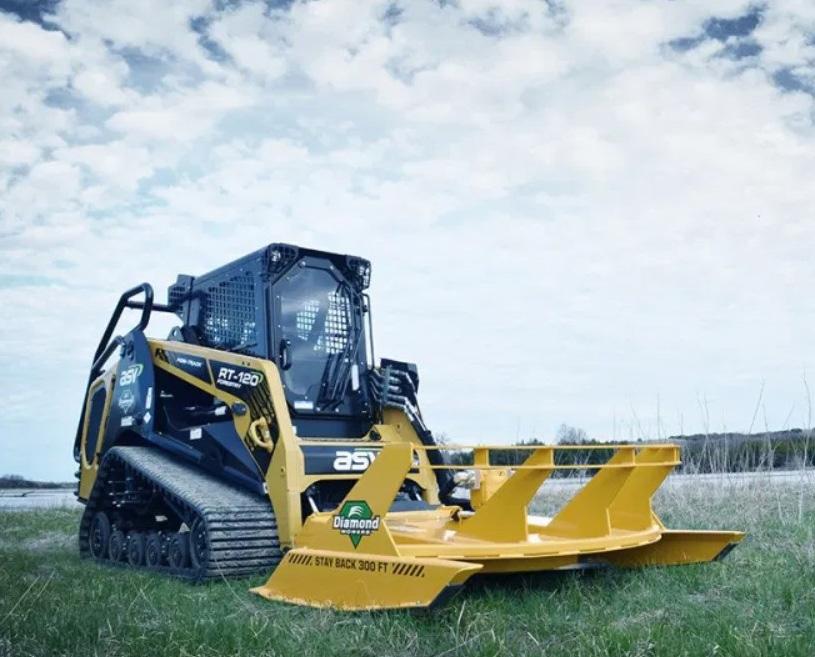
6 minute read
MOWING AND MAINTENANCE | MANAGE INVASIVE SPECIES
When introduced beyond their natural geography, many species of trees and vegetation can infest and degrade land while harming native ecosystems. They have the potential to overtake fields, forests or even the resources native grasses and vegetation need to live, which results in killing off valuable land.
Stringent control and eradication measures are often necessary for landscape professionals to minimize the spread of invasive trees and prevent damage to the environment. Fortunately, there are a variety of options for removing these tenacious intruders from your property. Invasive Species by Region Before we dive into the “how” of invasive tree and vegetation management, it’s important to understand the “what”— or rather, the types of vegetation green industry professionals are likely to encounter. The following is an overview of the types of invasive species landscape professionals can expect to find in the various regions of the United States. Northeast Invasive sumac trees can be found across much of the country, but they pose the biggest threat in two areas, namely the Northeast and into midwestern states such as Ohio and Michigan. Sumac trees grow quickly, aggressively and in dense thickets. If they are left unchecked, they can outgrow and displace native vegetation by cutting off access to nutrients and force out wildlife by consuming their natural habitat and/or the vegetation they depend on for survival. Because of their dense foliage, sumac trees also block rain and sunlight, which brings unwanted changes to an ecosystem’s soil chemistry and temperature. Southeast Invasive tree species across the southeastern region of the country include the Brazilian pepper tree, Chinese tallow, privet and saw palmetto. For reasons that include toxicity, deposition and invasive root systems, these trees can rapidly
MANAGING INVASIVE TREES AND VEGETATION IN THE US overtake natural habitats and greatly reduce the profitability and usability of land if they are left unattended. Separately, Kudzu trees cover an area that stretches from Texas to New York. While they are ideal for shading porches, feeding livestock and helping to control erosion, Kudzu trees grow quickly and produce vines that cover and kill native plants, envelop trees, snap branches and climb buildings and power lines. In addition, they can withstand drought, frost and fire damage and remain dormant for several years before germinating. Therefore, it is especially crucial to conduct annual maintenance and be sure to kill every root crown, the process of which can take up to several years to accomplish. Midwest The boxelder is a species of maple with brittle wood and a fast growth system that thrives in wet bottomlands common in the Midwest. While these trees help stabilize stream banks and shelter wildlife, they are considered a weed in many urban areas. Their weak wood causes them to split or drop their limbs in relatively light wind conditions, making them a landscape maintenance nightmare. The boxelder’s rapid spread can be attributed to how quickly it germinates after dropping its seeds: winged papery fruits that Using a brush cutter helps landscapers spin through the air and travel great access the tree trunk and roots. distances away from the parent tree.
Diamond Mowers
Central U.S.
Native to Kansas and originally limited to rocky bluffs, the Eastern Red-Cedar began terrorizing the central portion of the U.S. from South Dakota down to Oklahoma and parts of Texas when new land management practices
led to a decrease in controlled fires, allowing forests to spread. Because this type of tree grows all year round in temperatures above 40 degrees F and flourishes in a variety of precipitation conditions, these trees damage the surrounding grasslands by intercepting 25 percent to 60 percent of rainfall thanks to their dense canopies. In fact, they can consume anywhere from six to 16 gallons of water each day. What’s more, they also fuel wildfires because of their flammable foliage, thin bark and propensity for containing oils.

Northwest
While technically not a tree, Scot’s Broom is a nuisance in the Pacific Northwest, particularly along the sides of highways. This thick, bushy shrub thrives on sandy, disturbed soil, and it quickly establishes deep, woody roots. Additionally, it adds massive amounts of nitrogen to the soil. The excess nitrogen, in turn, negatively impacts and changes plant communities. Scot’s Broom also produces many seeds, which can last in the soil for up to half of a century.
Diamond Mowers Disc
Mulching helps break material down into a finer substance.
Stopping the Spread
In some cases, invasive tree species can be tamed by professionals using chemicals or controlled fires. However, the most effective way for managing overgrowth is through mechanical control, which can be accomplished with the use of skidsteer attachments and a three-step process. The process is outlined below.
1. Brush Cutting
The first step is getting to the source, which typically involves cutting back branches and brush to access the tree’s trunk and roots. The best tool for this job is a brush cutter. The main reason is because this versatile, highperformance skid-steer attachment excels at processing material such as thick grass, brush and branches.
2. Mulching
Mulching is the process of grinding trees and brush down into a finer material for quick decomposition. For this step, either a disc mulcher or drum mulcher is recommended. Determining
Over 35 New Items for 2022
WORLD‘S SHARPEST BLADES
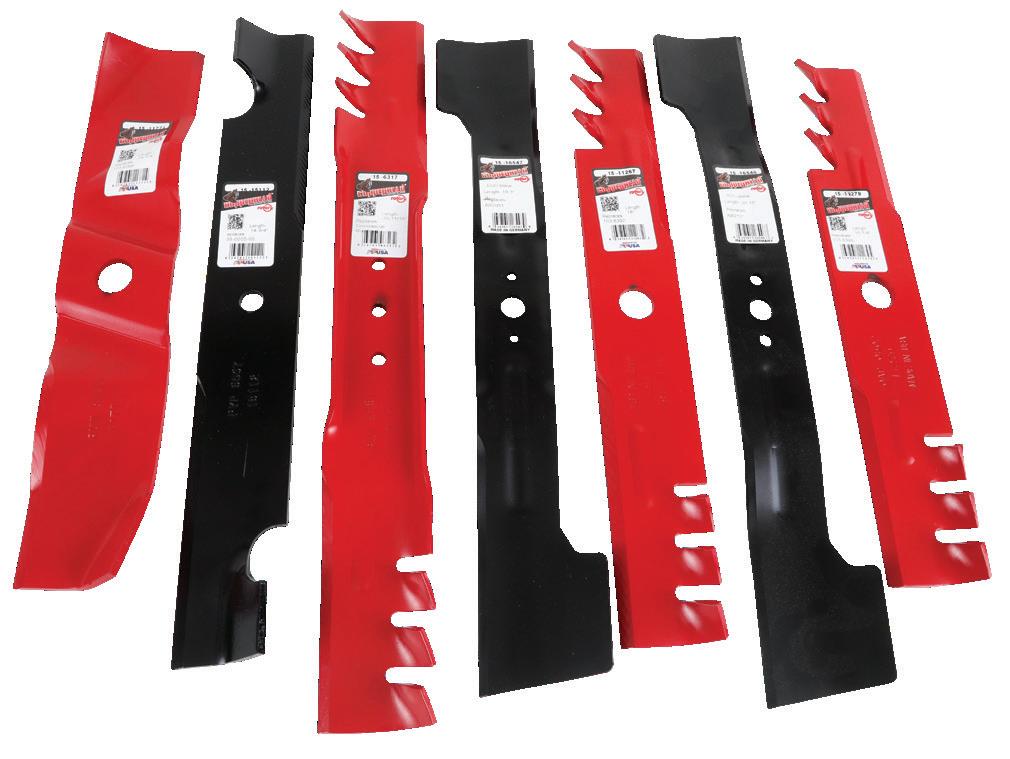
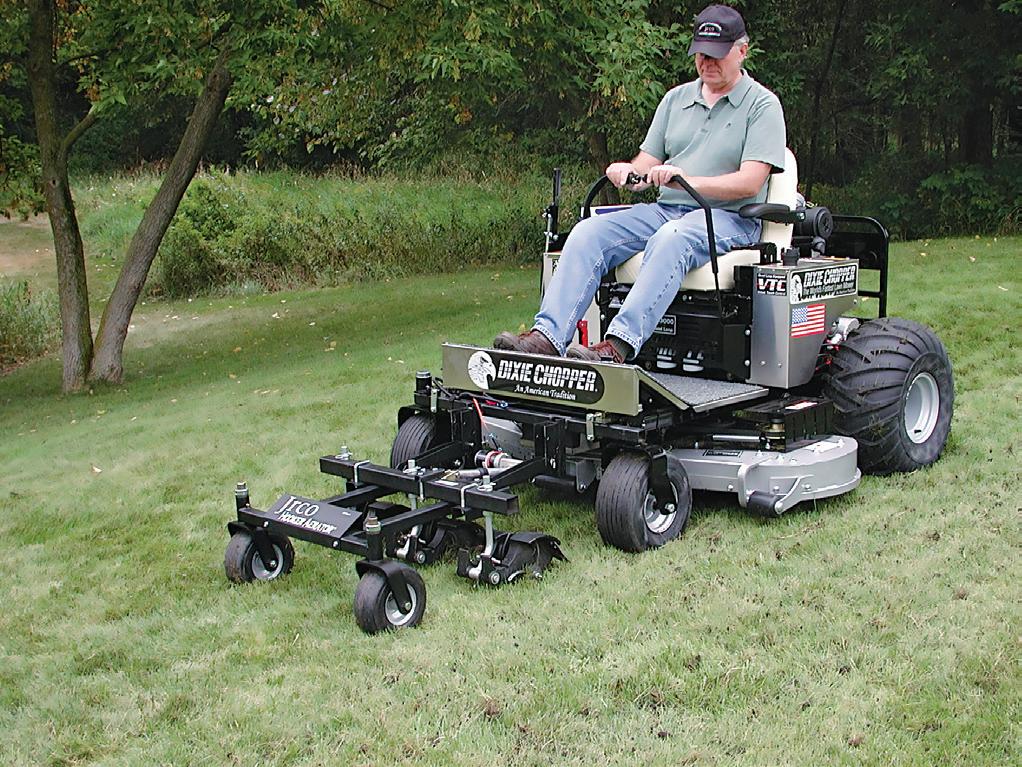
Scan to view Blade Video.
Built for Powerful Performance!
Visit rotarycorp.com or call 1.800.841.3989
WITH YOUR MOWER!
DO MORE
JRCO Hooker Aerators conveniently attach to your mower, tractor or utility vehicle! Offered in front mount or tow-behind versions.
Heavy-duty Attachments for Commercial Mowers
Save time and money with JRCO Heavy-Duty Attachments for Commercial Mowers. By using attachments for your lawn mower, you get the job done twice as fast and also save space by not hauling additional equipment. Do more with your mower!
SPOT SPRAYERS
CANOPIES
TINE RAKE DETHATCHERS
LEAF BLADE PLOW TRANSPORTER
BLOWER BUGGY AERATORS
BROADCAST SPREADER
800-966-8442 • jrcoinc.com/GIP

Diamond Mowers
the proper attachment for this job is as simple as assessing the size of the trees that you will be breaking down.
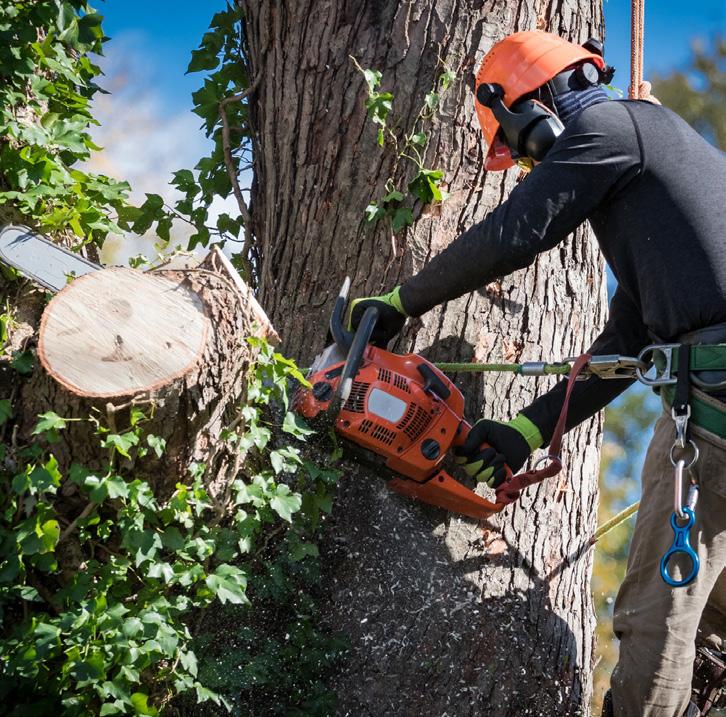
3. Stump Grinding
To prevent trees from resprouting, a stump grinder is necessary. This process is typically done after trees have been cut or mulched.
Conclusion
©B en jamin Clapp – stock.adobe.com To eradicate an invasive species from an area, landscape professionals don’t necessarily need to make use of all three attachments. A mulcher, for instance, may be sufficient for steps one and two, depending on the size of the area and the material being cleared. If there are any questions about invasive trees and vegetation on your property, it may be wise to consult an arborist or tree care professional.
Matt Nelson Product Manager Diamond Mowers
MONROE TRUCK EQUIPMENT’S ZDumpPRO for Landscapers
The ZDumpPRO - Designed for reliable and affordable hauling • Quick drop tailgate for efficient loading and unloading • Secure latching to protect material • Fold down sides
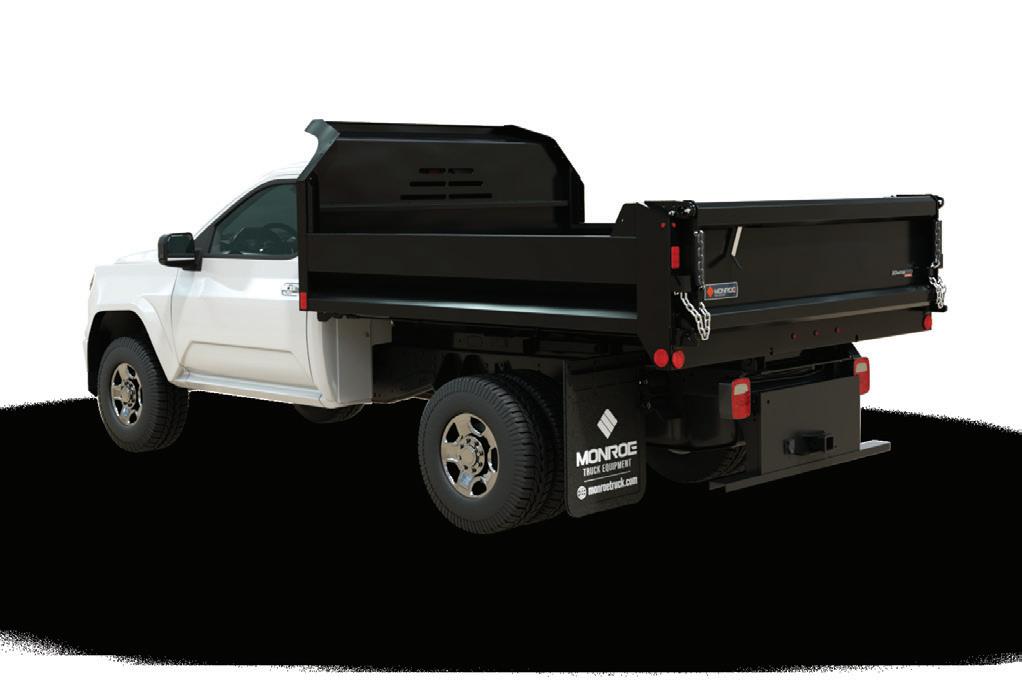
Learn more at
commercial.monroetruck.com










